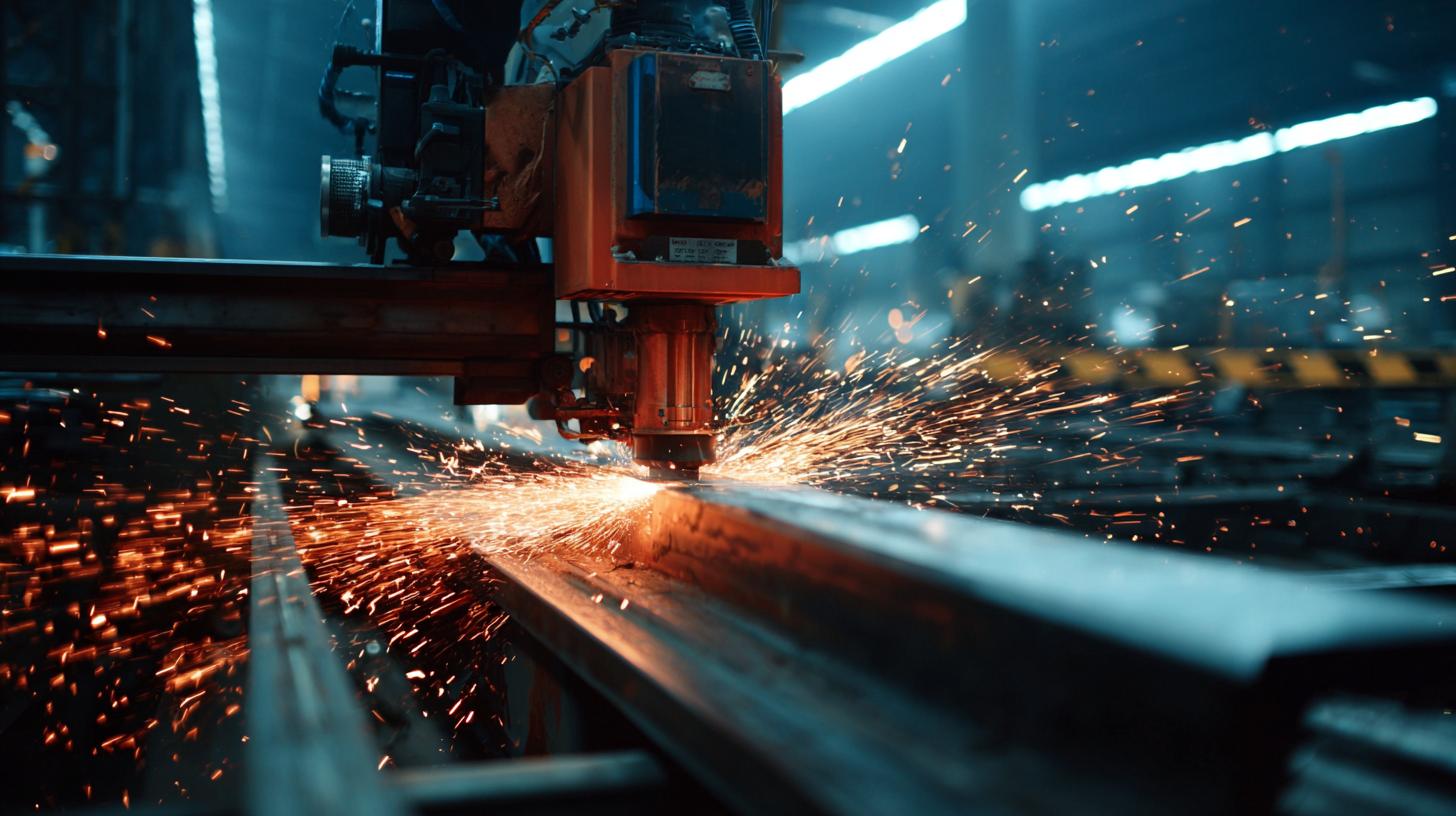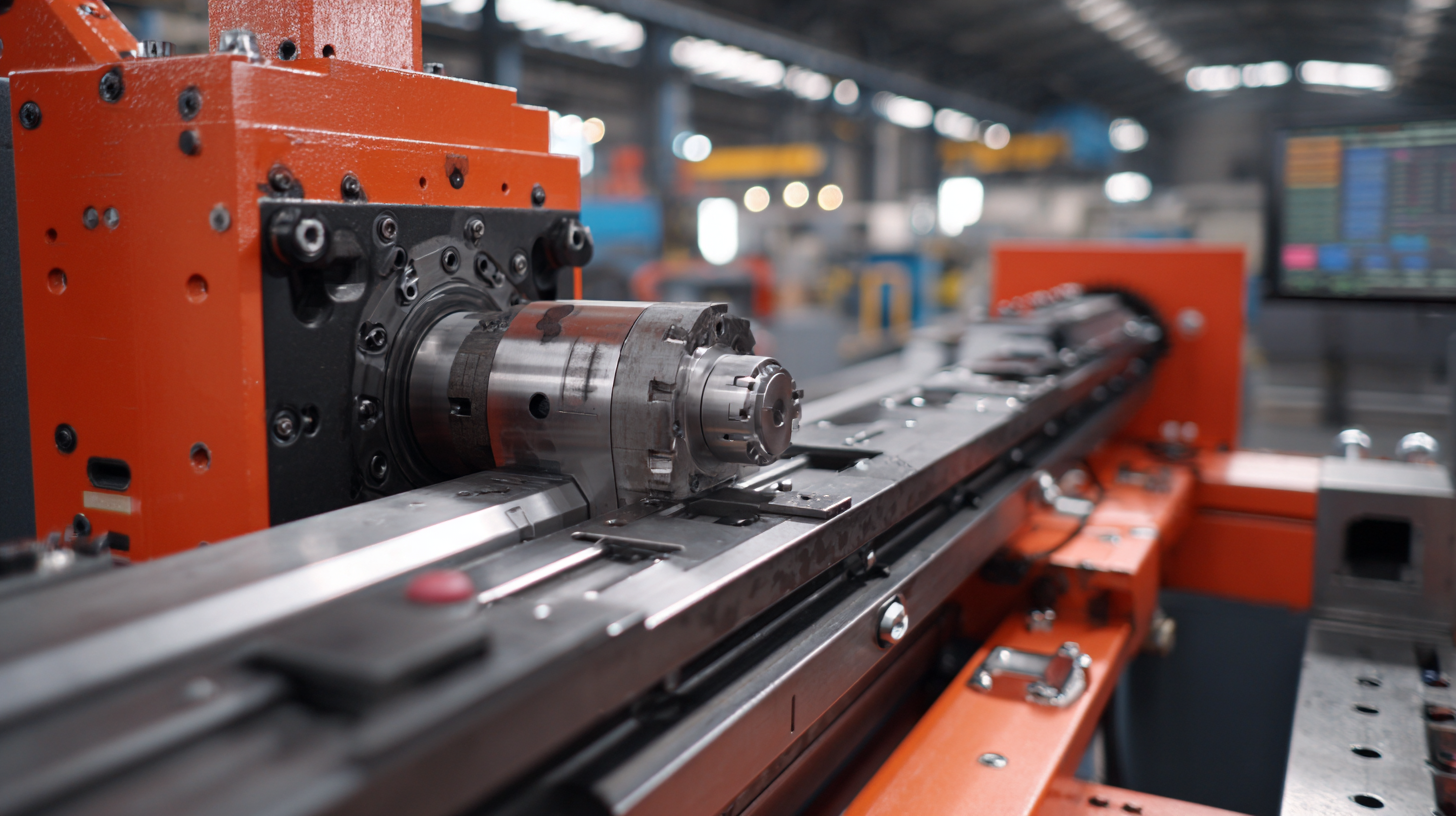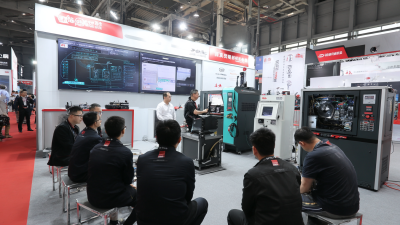The metal fabrication industry is undergoing a significant transformation, driven by technological advancements that enhance efficiency and precision. Among these innovations, the Saw Welding Machine stands out as a game-changer, integrating cutting and welding processes into a singular, streamlined operation.

According to a report from MarketsandMarkets, the global metal fabrication market is projected to reach $20 billion by 2025, with a compound annual growth rate (CAGR) of 4.9%. This surge is largely attributed to the increasing demand for high-quality, cost-effective manufacturing solutions.
The adoption of advanced Saw Welding Machines not only improves production speed but also reduces material waste, offering a sustainable alternative in a competitive landscape.
As industries look to optimize their operations, the integration of this cutting-edge technology is set to redefine standards in metal fabrication, marking a pivotal shift toward more innovative and efficient processes.
The advent of advanced saw welding machines has transformed the landscape of metal fabrication, ushering in a new era characterized by efficiency, precision, and versatility. These machines utilize state-of-the-art technology to deliver superior welds, significantly reducing production time and material waste. One of the most notable benefits is their ability to handle a variety of metal types and thicknesses, making them suitable for a wide range of applications, from automotive to construction.
Tips: When investing in advanced saw welding machines, consider the compatibility with your existing tools and the specific materials you frequently work with. This will ensure a seamless integration into your workflow and maximize productivity.
Another advantage of these machines lies in their enhanced safety features, which provide a more secure working environment. Operators can work confidently, knowing that advanced sensors and automatic shut-off systems mitigate the risks associated with traditional welding techniques. Additionally, the refined process minimizes exposure to harmful fumes and sparks, promoting a healthier workplace.
Tips: Regular maintenance and training are crucial for maximizing the benefits of advanced saw welding machines. Ensure that your team is well-trained to handle the technology and schedule routine check-ups to maintain optimal performance.
In the ever-evolving field of metal fabrication, the incorporation of advanced saw welding machines is transforming traditional practices. Modern saw welding equipment is characterized by several key features that enhance efficiency, precision, and overall productivity. According to a report by Technavio, the global market for welding equipment is projected to grow at a CAGR of over 5% from 2021 to 2025, which underscores the rising significance of these innovations.
When selecting saw welding machines, it is essential to consider features such as automated operation, multi-functionality, and compatibility with various materials. Advanced machines often come equipped with programmable logic controllers (PLCs) for superior control over welding parameters, ensuring consistent quality. Additionally, energy efficiency is a growing concern, with new models designed to consume up to 30% less energy compared to earlier versions, as noted by the Welding Equipment Manufacturers Association.
Tips: Always evaluate the scalability of the welding equipment to accommodate future projects, and consider investing in machines with enhanced safety features to minimize workplace hazards. Furthermore, prioritize equipment that offers robust customer support and training, as this can significantly boost operator proficiency and machine longevity.
The adoption of advanced saw welding technology in metal fabrication has the potential to significantly enhance operational efficiency. According to a recent industry report by MarketsandMarkets, the global saw welding market is projected to reach $2.3 billion by 2026, demonstrating substantial growth driven by innovation and increased demand for precision in metalworking. To maximize efficiency in this field, it is essential to implement optimized workflows and leverage automation features offered by modern machines.
One effective strategy involves regular maintenance and calibration of saw welding machines, which can prevent costly downtime and ensure optimal performance. Studies indicate that machines operating at their peak efficiency can improve production rates by as much as 25%, translating into considerable savings over time. Additionally, training operators in advanced techniques and software control can facilitate smoother operations, allowing for real-time adjustments that enhance cutting precision and reduce waste. With a proactive approach, fabrication shops can harness the full potential of saw welding technology to achieve greater productivity and quality in their metalworking processes.
| Feature | Importance | Benefit | Efficiency Gain (%) |
|---|---|---|---|
| Precision Cutting | High | Reduces waste material | 25% |
| Automated Settings | Medium | Increases throughput | 30% |
| Robust Design | High | Durability in tough environments | 15% |
| User-friendly Interface | Medium | Reduces training time for operators | 20% |
| Energy Efficiency | High | Lower operational costs | 10% |
In the world of metal fabrication, professionals often face a plethora of challenges, such as material distortion, inconsistent seams, and time-consuming processes. Advanced saw welding machines have emerged as game-changers, effectively addressing these issues by offering precision, speed, and flexibility. These machines are designed to minimize heat input, reducing the risk of warping and ensuring that the components fit together flawlessly.
Tip: When selecting a welding machine, consider one that features adjustable settings to optimize for diverse materials and thicknesses. This flexibility can significantly improve both the quality of welds and the overall production speed.
Moreover, the automation capabilities of modern welding machines not only streamline workflows but also enhance safety by reducing manual handling. With built-in monitoring systems, operators can detect issues in real-time, further reducing the likelihood of defects in the final product.
Tip: Investing in regular maintenance for your welding equipment can prolong its lifespan and maintain optimal performance, ensuring that your fabrication processes remain efficient and cost-effective.

The field of metal fabrication is undergoing a significant transformation with the integration of advanced saw welding machines. As industries strive for greater efficiency and precision, future trends in saw welding are poised to enhance fabrication processes dramatically. One notable advancement is the incorporation of automation and robotics, which streamlines operations, reduces human error, and increases output consistency. These technologies allow for intricate designs to be executed with unparalleled speed and accuracy, ultimately leading to shorter production cycles.
Moreover, the adoption of smart technologies in saw welding machines is set to revolutionize quality control. Systems equipped with sensors and data analytics can monitor weld quality in real-time, providing feedback and adjustments on the fly. This capability not only enhances productivity but also ensures that the final products meet stringent industry standards. As fabricators embrace these innovations, they position themselves ahead of the curve, ready to meet the growing demands of a competitive marketplace while maintaining high levels of craftsmanship and reliability.







